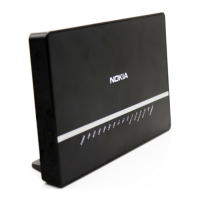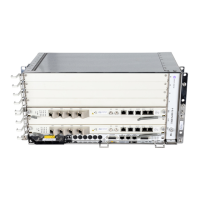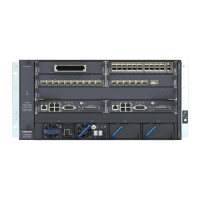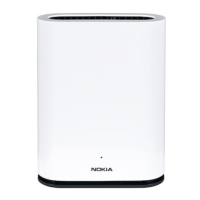Services Overview
56
FD 100/320Gbps NT and FX NT IHub Services Guide
3HH-11985-AAAA-TQZZA Issue: 13
3 Specify an encapsulation type.
4 Specify a far-end node.
3.8.3.2 Configuring an SDP
When specifying MPLS SDP parameters, you can only specify a static LSP name,
an RSVP-based LSP or enable LDP. There cannot be 2 methods of transport in a
single SDP.
LSPs and static LSPs are configured in the configure>router>mpls context. See the
FD 100/320Gbps NT and FX NT IHub MPLS Guide for configuration and command
information.
Use the following CLI syntax to create a MPLS SDP:
configure>service>sdp sdp-id mpls create
description description-string
far-end ip-address
ldp (when using ldp)
lsp lsp-name [lsp-name] (static or RSVP-based LSP)
path-mtu octets signaling {off|tldp}
no shutdown
The following displays an LSP-signaled MPLS SDP, and an LDP-signaled MPLS
SDP configuration.
A:ALA-12>configure>service# info
-------------------------------------------
...
sdp 8 mpls create
description "MPLS-10.10.10.104"
far-end 10.10.10.104
lsp "to-104"
no shutdown
exit
sdp 104 mpls create
description "MPLS-10.10.10.94"
far-end 10.10.10.94
ldp
no shutdown
exit
Note — When you specify the far-end ip address, you are
creating the tunnel. In essence, you are creating the path from
Point A to Point B. When you configure a distributed service,
you must identify an SDP ID. Use the show service sdp
command to display the qualifying SDPs.
